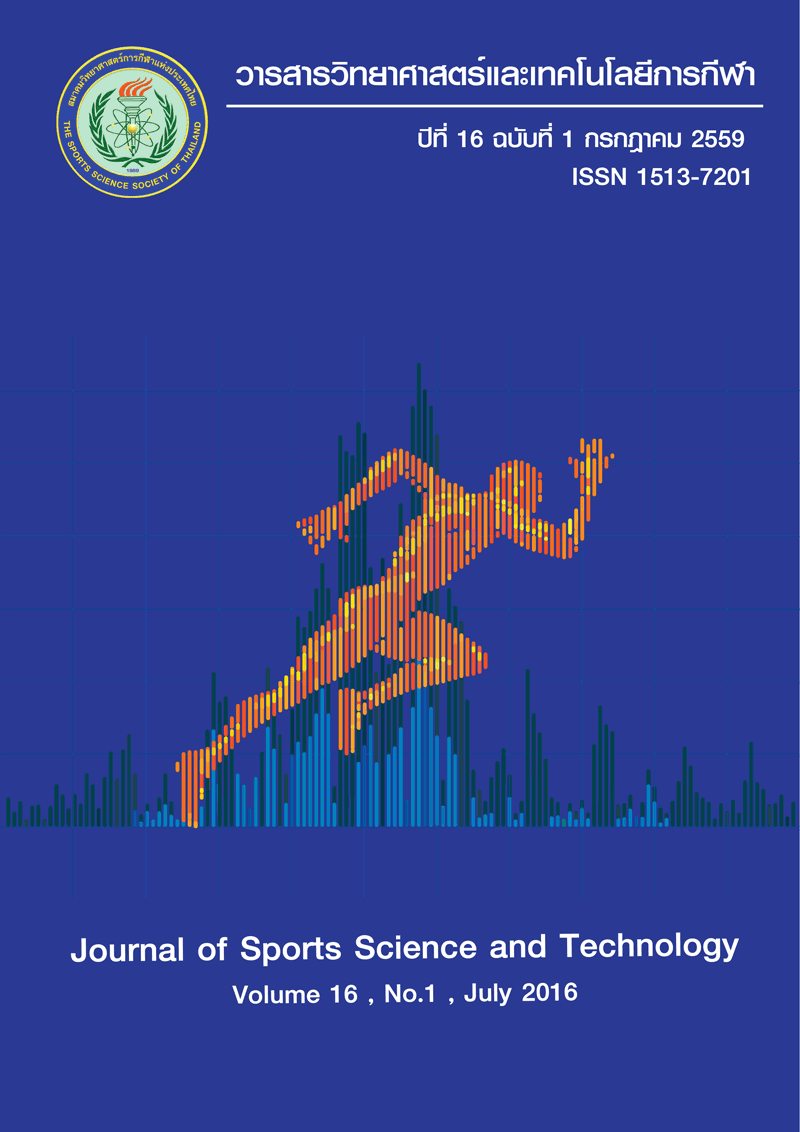RELATIONSHIPS BETWEEN BOREDOM AND AVOIDANCE BEHAVIORS FROM TRINING OF THE ATHLETES
Abstract
This mix research was to examined the relationships between boredom and avoidance behavior from sports training. Total 634 athletes from 17 sport types in the Sports Hero Project (312 males, 322 females), age ranged from 12 – 25 years. They were asked to complete the revised burnout measures with 5 level of boredom. One extra question for degree of boredoms was asked to identify the boredom athletes.The relationships among variables of its measure were computed through a series of confirmatory factor analysis. The independent t-test was utilized for the differences between the boredom athletes and total athletes on four dimensions (physical and psychological exhaustion, sport devaluation, reduced sense of accomplishment, boring and lack of meaning). Then, the 12 identified boredom athletes were structural interviewing, open-ended questioning to explore their action strategies of avoidance from sports training. Results revealed that, there were four dimensions of collected exhaustion related to 4 dimensions of avoidance behaviors. One hundred fifteen athletes (18% of total samples), indicated that they were boredom group. Most athletes were sometimes feel boring but not often, whereas, few often and very often feeling in physical and psychological exhaustion. Statistically, the mean scores of the group of boredom athletes, was significantly different (p<0.05) from the whole group. Refers to the athletes reported, 4 certain strategic actions were identified, analyst, active – passive informing, business man and faking), to avoid sport training. In conclusion, all four alienated behaviors were used, especially, collective physical and psychological exhaustion dimension related to athlete alienation from sport training.
(Journal of Sports Science and Technology 2016; 16(1) : 139-149 )
Keywords: Boredom, Exhausted, Avoidance, Sports hero, Avoidance action strategy
*Corresponding author: Ladda Ruangmanotam
Faculty of Sport Science and Health,
Institute of Physical Education – Sisaket Campus,
Muang Sisaket, Thailand 33000
E-mail: pr_ladda@yahoo.com






